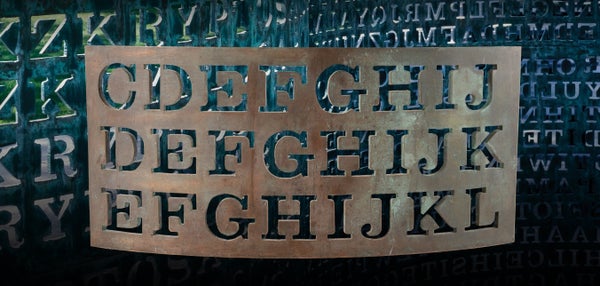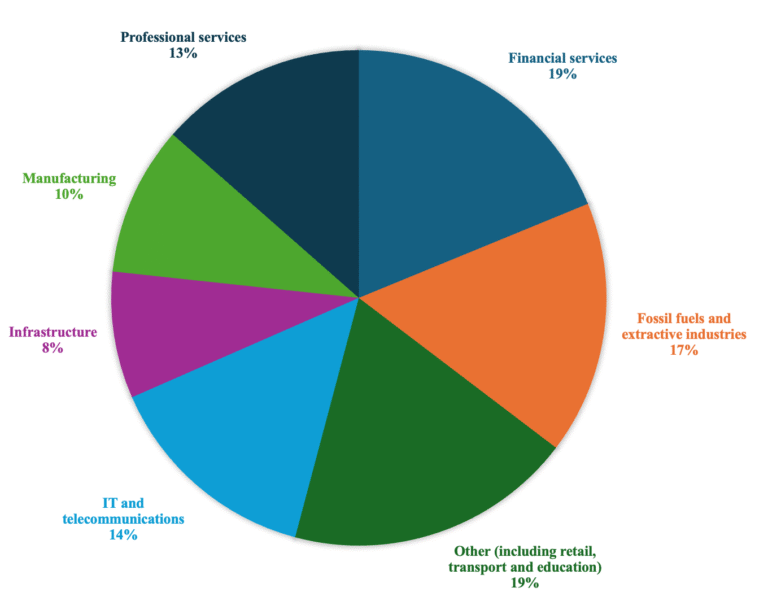November 12, 2025
3 min read
Final Clues to Mystery of CIA Kryptos Puzzle Released
“Kryptos has not been solved,” said artist Jim Sanborn after releasing his parting clues to the “K4” section of his sculpture puzzle

A “proof-of-concept” copper plate for the Kryptos sculpture that is up for auction.
WASHINGTON, D.C.—New clues to the storied Kryptos puzzle sculpture installed on the grounds of the CIA came to light on Wednesday. Speaking from an International Spy Museum stage, artist Jim Sanborn, who created the encrypted puzzle, said it has not been fully deciphered, as had been claimed, and shared tantalizing hints for pursuing the complete solution.
Later in November Sanborn, age 79, will auction the solution to the fourth part of the sculpture, called “K4”—79 encrypted letters that start with “OBKR.” “K4 has not been solved or decrypted,” Sanborn said, despite the news in September that journalists Jarett Kobek and Richard Byrne had discovered its deciphered text in the Smithsonian Institution’s archives. (They have since pledged to keep the solution text unreleased to the public.)
The artist aimed to speak out before he sold ownership of the full solution. “It’s sort of my last chance to impart information about what the new owner—or, as I call it, the Kryptos keeper—is going to be able to say and do after it’s transferred,” Sanborn said.
On supporting science journalism
If you’re enjoying this article, consider supporting our award-winning journalism by subscribing. By purchasing a subscription you are helping to ensure the future of impactful stories about the discoveries and ideas shaping our world today.
Installed at the CIA headquarters in 1990, Kryptos is a curved copper panel that holds letters to make four coded messages. The puzzle has long intrigued cryptographers and the public, and it gained wider fame when it was referenced on the book jacket of Dan Brown’s novel The Da Vinci Code. Sanborn also formally announced that a long-hinted-at “K5” coded message will be released when K4 is solved. The new puzzle will be visible somewhere in a “public space,” Sanborn said. The new code will involve elements of the other puzzles and, like K4, will be 97 characters long. Both 97-letter messages will share some of the same coded words in the same position.
In his talk, Sanborn counseled “creativity” for anyone looking to find the decipher key to K4. And in an open letter to the “kryptos community,” he announced four new clues to the full solution:
Two events figure in the solution: a 1986 trip that Sanborn took to Egypt and the 1989 fall of the Berlin Wall.
The “BERLINCLOCK” mentioned in previous K4 clues refers to the World Clock in Berlin.
The codes within Kryptos are about “delivering a message”
K5 is thematically connected to K2 text reading, “its buried out there somewhere.”
Sanborn spoke about his work at the CIA to build the sculpture, noting that if he had tried to bury any more clues at the location, they would have to be “ephemeral” to pass the screening that he and his co-workers faced daily during the installation.
His International Spy Museum presentation had the air of a mystery story throughout—he hinted at a buried secret culmination to his puzzles. During the lead-in to the auction of Kryptos materials, Sanborn developed an artificial intelligence answering system to automate responses to those claiming they have deciphered K4. And he will share the system with the winner of the auction.
The first three Kryptos puzzles were solved in the 1990s. The first two were Vigenère ciphers, which shift each letter a predetermined amount with each use in a pattern revealed by their key. The solution to K3 involves a transposition code that rotates letters in an anagram fashion. The key to deciphering the puzzle is a password that reveals the rotations. Such codes were widely used in World War II and the cold war.
The encoding method of K4 remains an enigma, however. In his talk, Sanborn good-humoredly deflected a question from Scientific American about the mathematics of the K4 solution by joking, “Who says it is even a math solution?” He later noted, “I was fortunate not to understand mathematics, probably in my ability to make the code.”
It’s Time to Stand Up for Science
If you enjoyed this article, I’d like to ask for your support. Scientific American has served as an advocate for science and industry for 180 years, and right now may be the most critical moment in that two-century history.
I’ve been a Scientific American subscriber since I was 12 years old, and it helped shape the way I look at the world. SciAm always educates and delights me, and inspires a sense of awe for our vast, beautiful universe. I hope it does that for you, too.
If you subscribe to Scientific American, you help ensure that our coverage is centered on meaningful research and discovery; that we have the resources to report on the decisions that threaten labs across the U.S.; and that we support both budding and working scientists at a time when the value of science itself too often goes unrecognized.
In return, you get essential news, captivating podcasts, brilliant infographics, can’t-miss newsletters, must-watch videos, challenging games, and the science world’s best writing and reporting. You can even gift someone a subscription.
There has never been a more important time for us to stand up and show why science matters. I hope you’ll support us in that mission.








